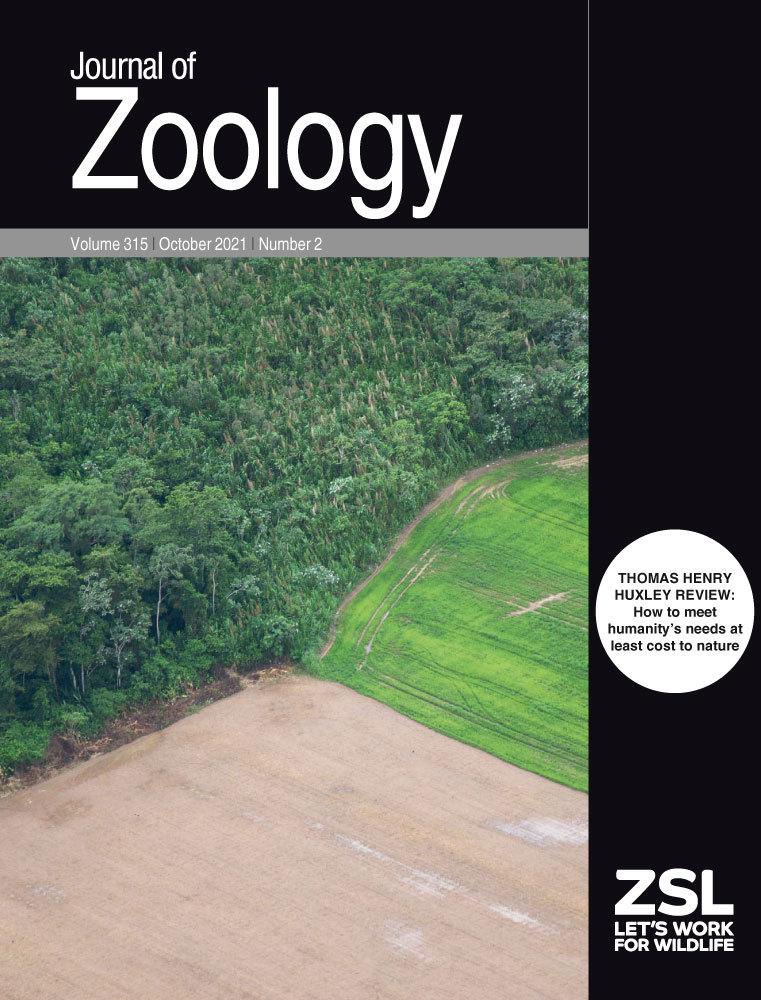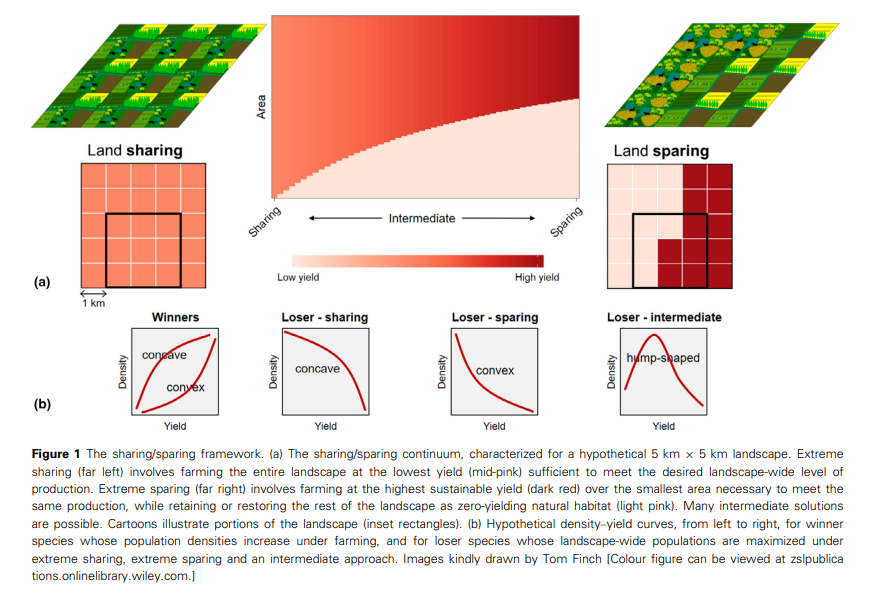Concentrating vs. spreading our footprint: how to meet humanity's needs at least cost to nature

Paper by Andrew Balmford (Cambridge University) in Journal of Zoology on the relative value of land sharing (low input) vs land sparing (high output) on biodiversity benefits.
Balmford, A (2021) Concentrating vs. spreading our footprint: how to meet humanity's needs at least cost to nature. Journal of Zoology 315 79-109. https://doi.org/10.1111/jzo.12920
Abstract
How to feed, house, clothe and power 11 billion of us without eliminating very many species and wrecking Earth's climate is perhaps this century's greatest challenge. We must obviously strive to curb growth in resource-intensive demand, but we also need to identify production systems that meet people's needs at least overall cost to nature. The land-sharing/sparing concept provides a quantitative framework for doing this, centred around the principle that generating meaningful insights requires comparing alternatives that are matched in terms of overall production. Applications of this framework to >2500 individually assessed species of vertebrates, plants and insects across five continents show that most species decline under farming, and that most would fare least badly under a land-sparing approach – with high-yield production meeting demand in a relatively small, farmed area, freeing-up space for conservation of intact habitats elsewhere in the landscape. However, important questions remain around how to deliver high yields sustainably, and how to ensure high-yield farming does indeed spare natural habitat. The framework is increasingly being applied in other domains too – including urban planning, recreation, forestry and fisheries – where it has the potential to shed light on long-running debates about whether nature would prefer us to concentrate our impact or spread it more lightly but widely. The realization that conservation cannot be delivered without simultaneously considering how humanity meets its needs in these and other sectors is of particular significance as policymakers meet to establish global environmental targets through to 2030 and beyond.
Key figure:


